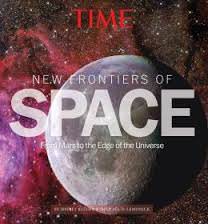In TIME‘s newest book, New Frontiers of Space: From Mars to the Edge of the Universe by Jeffrey Kluger and Michael D. Lemonick, readers learn just what’s been going on in our universe lately. The book seeks to “explore the latest scientific discoveries within our solar system and beyond,” and it does so with an approach that is unique and interesting for a number of ways – this is not your typical science read.
Throughout this volume, the editors of TIME brilliantly match scientific insight with gorgeous photographs. The physically large book would not only look wonderful on a coffee table or desk, but would be an interesting read for all who are smart enough to check. This is a book that you judge by its cover – and it’s wonderful.
Reminiscent of one of Time’s wonderful science series, the book is composed of about two dozen relatively short articles, with each focusing on a new stimulating insight from somewhere in the scientific world. Topics range from the quirky launch-day habits of the scientists at NASA’s Jet Propulsion Laboratory to the possibilities of finding life elsewhere in the universe, and perhaps finding remnants of it in our very solar system.
The articles themselves are everything that one would come to expect from one of the world’s leading publications; each one is brilliantly written, and the matching illustrations are as inspiring as they are stimulating. This set up allows for short bursts of sciencey-goodness; perhaps in the form of a daily dose during your morning coffee.
One of the most refreshing parts of this volume is it almost exclusively focuses on recent breakthroughs, it doesn’t seek to be a fundamental introduction to the mysteries of the cosmos – it shows where science has recently landed, where it is now, and where it’s going next. Think of it as a beautifully illustrated crash course on contemporary astronomical news.
In addition to showcasing scientific events, this volume also portray many of the heavy-hitters who help accomplish them. The ’25 Most Influential People In Space’ section was certainly a favourite for me, as it allowed access into a usually dark area of scientific accomplishment – namely, the scientists themselves! Everyone seems to know who the most famous actors in the country are, but now it’s time to learn about some people who spend more of their time socializing with the stars in the sky than those on the red carpet.
I’ll let the Time editors speak for themselves when they say that “space has a way of making sweet, goofy dreamers of us all. Come join us on that mission.”

